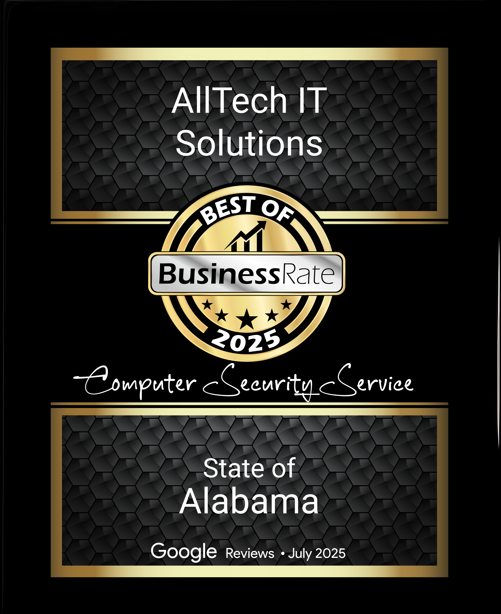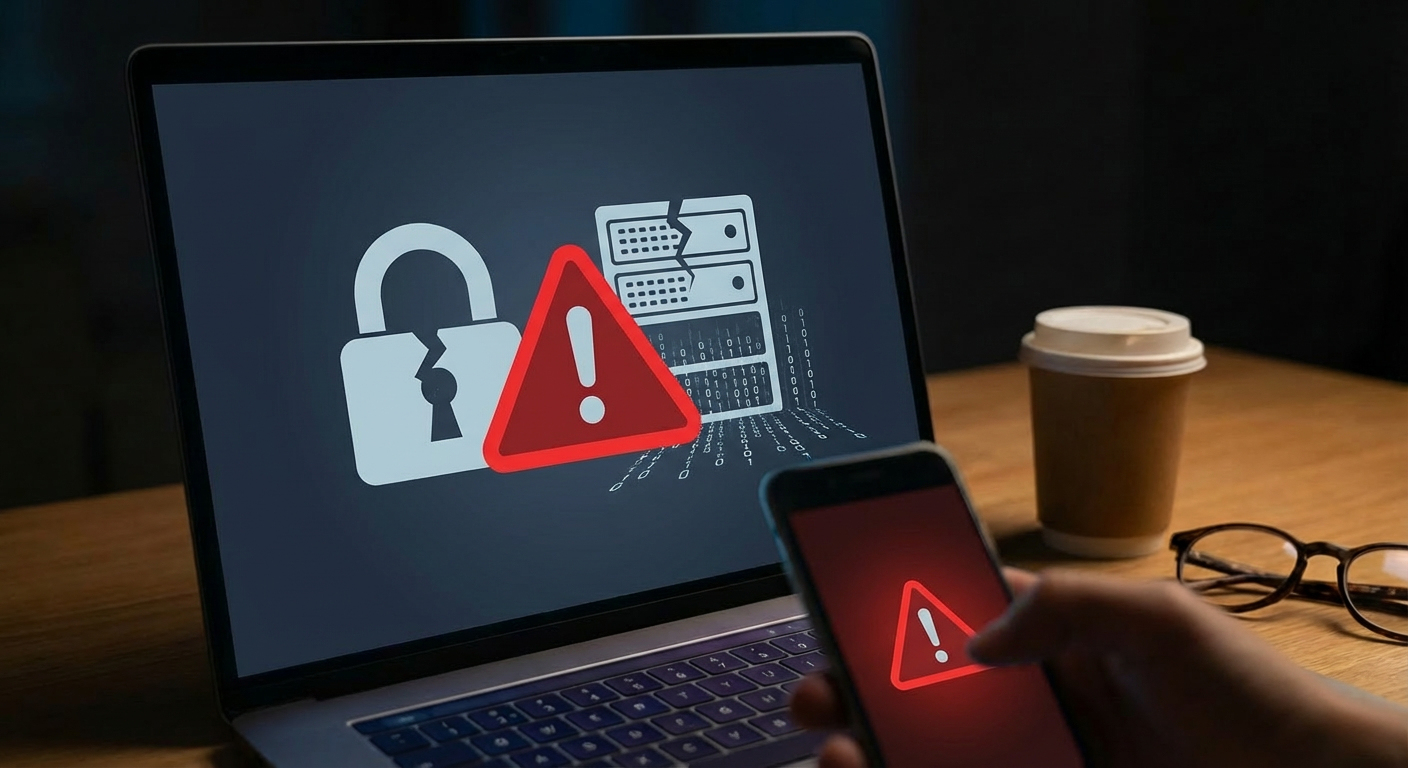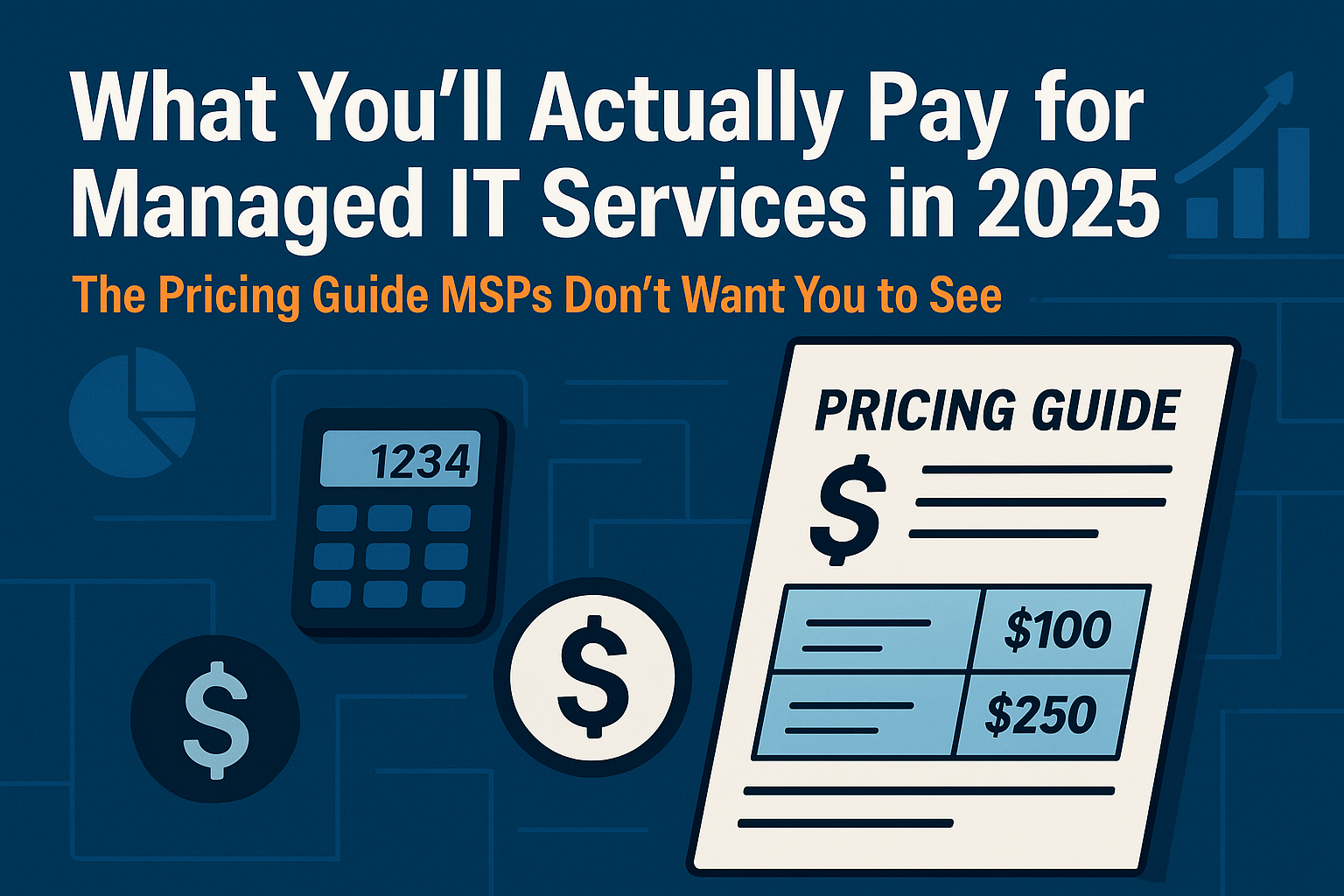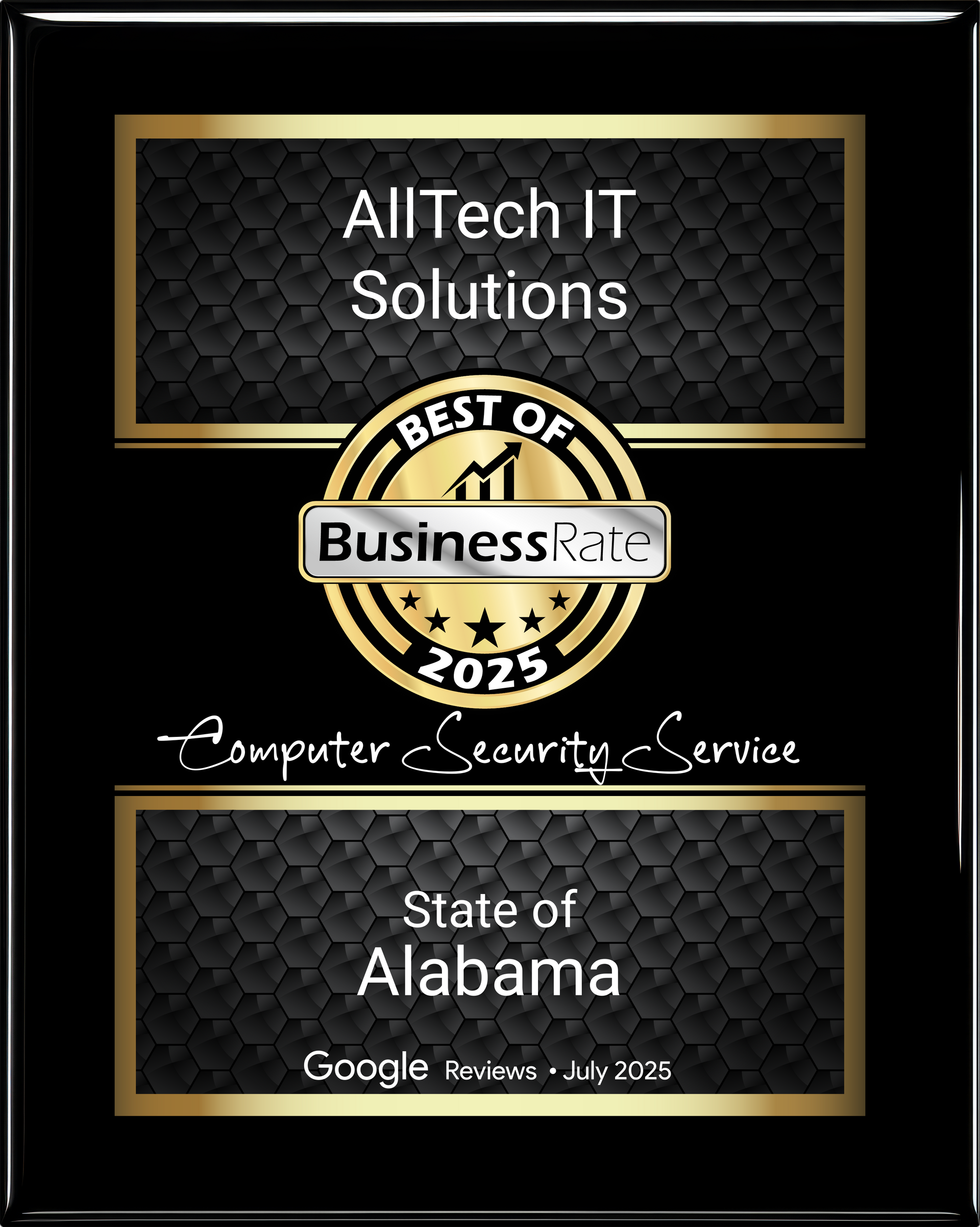Windows 10 End of Life: The Compliance Crisis That Demands Immediate Action
A Strategic White Paper for IT Leaders and C-Suite Executives
Executive Summary
On October 14, 2025, Microsoft officially ended support for Windows 10, leaving millions of business endpoints without security updates, compliance protection, or vendor support. For organizations still running Windows 10 systems—and recent surveys indicate this includes over 60% of enterprise environments—this isn't a future planning exercise. It's a present-day compliance emergency that exposes businesses to devastating financial penalties, insurance coverage gaps, and cyber liability.
The harsh reality is that every day of delay multiplies your risk exposure. Compliance frameworks like HIPAA, PCI DSS, and SOX explicitly require supported operating systems with current security patches. Cyber insurance policies contain specific exclusions for unsupported systems. Meanwhile, threat actors are already weaponizing known Windows 10 vulnerabilities that will never receive patches.
This white paper examines the immediate compliance implications of Windows 10 EOL, quantifies the financial and operational risks facing unprepared organizations, and presents AllTech's integrated migration and security framework designed to restore compliance and eliminate exposure—rapidly.
The Critical Moment: Why Windows 10 EOL Creates Immediate Compliance Liability
The Scale of the Problem
According to StatCounter's latest global desktop operating system statistics, Windows 10 still commands approximately 65% market share across enterprise environments as of September 2025, despite Windows 11's availability for over four years (StatCounter). This represents millions of business endpoints that became non-compliant overnight when Microsoft's extended support ended.
The Cybersecurity and Infrastructure Security Agency (CISA) has been particularly vocal about the risks, stating in their September 2025 advisory: "Organizations continuing to use Windows 10 after end-of-life face immediate and escalating cybersecurity risks. The absence of security updates creates a rapidly expanding attack surface that threat actors will aggressively target" (CISA).
Compliance Frameworks Don't Recognize "Grace Periods"
The compliance impact is immediate and unforgiving. Unlike previous operating system transitions where organizations had months to adapt, the current regulatory environment treats unsupported systems as automatic violations:
HIPAA Requirements: The Health Insurance Portability and Accountability Act mandates "reasonable and appropriate" safeguards, explicitly including systems that receive regular security updates. Using Windows 10 post-EOL constitutes a technical safeguards violation under 45 CFR § 164.312.
PCI DSS Standards: The Payment Card Industry Data Security Standard requires "supported system components" and current security patches. Version 4.0 specifically states that unsupported operating systems create automatic compliance failures, regardless of compensating controls.
SOX IT Controls: Sarbanes-Oxley Act requirements for IT general controls explicitly mandate supported operating systems for any system touching financial reporting processes.
Federal Compliance (CMMC, FedRAMP): Organizations serving federal customers face immediate contract compliance violations when using unsupported operating systems.
Insurance Coverage Gaps Create Financial Exposure
Cyber insurance policies have rapidly evolved to exclude coverage for incidents involving unsupported systems. Our analysis of current policy language from major carriers reveals that Windows 10 EOL creates immediate coverage gaps:
- Exclusion clauses now specifically reference "unsupported operating systems" as grounds for claim denial
- Premium surcharges of 15-30% are being applied to organizations with unsupported endpoints
- Coverage limitations reduce maximum payouts when unsupported systems are involved in incidents
One major insurer recently denied a $2.3 million ransomware claim specifically because the attack vector involved unpatched Windows 10 systems post-EOL.
The Anatomy of Windows 10 EOL Risk
Expanding Attack Surface
Without security updates, Windows 10 systems become increasingly vulnerable to both known and emerging threats. The National Vulnerability Database shows that Windows 10 had 147 critical vulnerabilities identified in its final year of support—none of which will receive patches going forward.
Threat intelligence from major security vendors indicates that cybercriminal groups are already developing Windows 10-specific exploit kits, knowing that millions of unpatched systems will remain deployed indefinitely. The economics are compelling for attackers: a single zero-day exploit can potentially compromise millions of endpoints with no possibility of vendor remediation.
Operational Compliance Breakdown
Beyond cybersecurity, Windows 10 EOL creates operational compliance challenges that cascade through business processes:
Audit Failures: External auditors are trained to identify unsupported systems as material weaknesses. Organizations face qualified audit opinions and regulatory scrutiny.
Vendor Requirements: Software vendors and business partners increasingly require supported operating systems as part of their security assessments and contract requirements.
Data Protection Violations: GDPR, CCPA, and similar privacy regulations require "appropriate technical measures" for data protection. Unsupported operating systems fail this standard.
Financial Impact Quantification
Our analysis of post-EOL incidents across multiple operating system transitions reveals predictable cost patterns:
- Direct breach costs average 23% higher when unsupported systems are involved
- Regulatory fines occur in 67% of incidents involving unsupported endpoints
- Business disruption lasts 40% longer when recovery involves legacy systems
- Legal costs increase substantially due to negligence claims related to known vulnerabilities
Architecting the Solution: AllTech's Integrated Windows 11 Migration Framework
Rapid Assessment and Risk Prioritization
We begin every Windows 10 EOL response with our AllTech Compliance Manager conducting a comprehensive environment assessment. This isn't a months-long discovery process—it's a rapid, automated inventory that identifies every Windows 10 endpoint, maps business criticality, and prioritizes migration sequences based on compliance risk.
Our assessment framework examines:
- Hardware compatibility for Windows 11 upgrade paths
- Application dependencies and legacy software requirements
- User workflow impact and training requirements
- Compliance timeline requirements by system type
- Network and security infrastructure dependencies
Intelligent Migration Pathways
Rather than applying a one-size-fits-all migration approach, our AllTech Endpoint Pro Suite creates intelligent migration pathways that balance speed, risk, and operational continuity:
Immediate Isolation: Systems that cannot be immediately migrated are quarantined using our network access control capabilities, preventing them from accessing sensitive data while maintaining basic functionality.
Staged Rollouts: Critical systems receive priority migration scheduling, while less sensitive endpoints follow optimized waves that minimize business disruption.
Hybrid Protection: During the transition period, our AllTech User Protection Suite provides enhanced monitoring and threat detection specifically calibrated for Windows 10 endpoints awaiting migration.
Zero-Trust Security During Transition
Migration periods create unique vulnerabilities as organizations operate mixed environments. Our security framework addresses this challenge through zero-trust principles:
Micro-Segmentation: Legacy Windows 10 systems are isolated in secure network segments with limited access to business-critical resources.
Enhanced Monitoring: Our 24/7 SOC provides intensive monitoring of Windows 10 endpoints, with automated threat hunting and rapid response capabilities.
Compensating Controls: While Windows 10 systems await migration, we implement additional security layers including DNS filtering, advanced endpoint detection, and user behavior monitoring.
Compliance Documentation and Evidence
Throughout the migration process, our AllTech Compliance Manager maintains detailed documentation of remediation efforts, creating the evidence trail necessary for audits and regulatory reviews:
- Migration timeline documentation with business justification for phasing
- Risk assessment records showing mitigation strategies for legacy systems
- Security control evidence during the transition period
- Post-migration validation confirming compliance restoration
The Tangible Outcomes: Measurable Business Benefits
Restored Compliance Posture
Organizations completing our Windows 11 migration framework achieve immediate compliance restoration across all major frameworks. Our clients report:
- 100% audit success rate for organizations completing migration within our recommended timelines
- Zero compliance violations related to operating system support
- Improved audit scores as updated systems demonstrate proactive security management
Enhanced Security Resilience
Windows 11 brings significant security improvements that go beyond simple patch availability:
Hardware-Based Security: TPM 2.0 requirements enable hardware-backed encryption and secure boot processes that fundamentally improve endpoint security posture.
Zero Trust Integration: Windows 11's native security features integrate seamlessly with our AllTech Endpoint Pro Suite to create comprehensive zero-trust endpoint protection.
Attack Surface Reduction: Windows 11's security baselines eliminate numerous legacy protocols and services that create vulnerability in Windows 10 environments.
Operational Efficiency Gains
Beyond compliance and security, Windows 11 migration delivers measurable operational improvements:
Reduced Support Overhead: Windows 11's improved reliability and self-healing capabilities reduce help desk tickets by an average of 32% in our client environments.
Enhanced Productivity: Modern interface improvements and integration capabilities increase user efficiency, particularly for remote and hybrid workers.
Future-Proofing: Organizations completing migration now avoid the next wave of compliance challenges as regulatory requirements continue evolving toward modern security standards.
Insurance and Risk Profile Improvement
Completing Windows 11 migration creates immediate insurance and risk benefits:
- Premium reductions of 10-20% as carriers recognize improved security posture
- Coverage restoration for previously excluded scenarios
- Risk assessment improvements for business partners and vendors requiring security evaluations
Your Strategic Next Step: From Crisis to Competitive Advantage
The Windows 10 end-of-life transition represents more than a compliance obligation—it's an opportunity to fundamentally strengthen your organization's security posture, operational efficiency, and competitive positioning. Organizations that act decisively transform this crisis into a strategic advantage, while those who delay face escalating risks that compound daily.
Every day of inaction multiplies your exposure. Every Windows 10 system remaining in your environment represents a compliance violation, an insurance gap, and a potential attack vector that threat actors are actively targeting. The question isn't whether to migrate—it's how quickly you can restore compliance and eliminate risk.
We've guided hundreds of organizations through similar transitions, and the pattern is clear: rapid, strategic action minimizes disruption while maximizing long-term benefits. The organizations that emerge strongest are those that treat this moment as an opportunity to modernize their entire technology foundation, not just update their operating systems.
About AllTech IT Solutions
AllTech is a leading provider of integrated IT management and cybersecurity solutions. We partner with businesses to transform their technology from a liability into a strategic asset, delivering robust security, operational efficiency, and a clear path to compliance. Our expert team leverages best-in-class platforms to build proactive and resilient technology environments.
Take the Next Step
Ready to fortify your defenses and turn your security posture into a competitive advantage? See how AllTech's strategic approach can be tailored to your unique business challenges.
Contact our cybersecurity strategists today for a complimentary security consultation.
Email: Sales@AllTechSupport.com
Phone: 205-290-0215
Web: AllTechSupport.com
Works Cited
CISA. "End-of-Life Operating Systems Security Advisory." Cybersecurity and Infrastructure Security Agency, 15 Sept. 2025, www.cisa.gov/news-events/alerts/2025/09/15/end-life-operating-systems-security-advisory.
StatCounter. "Desktop Operating System Market Share Worldwide." StatCounter Global Stats, Sept. 2025, gs.statcounter.com/os-market-share/desktop/worldwide.











